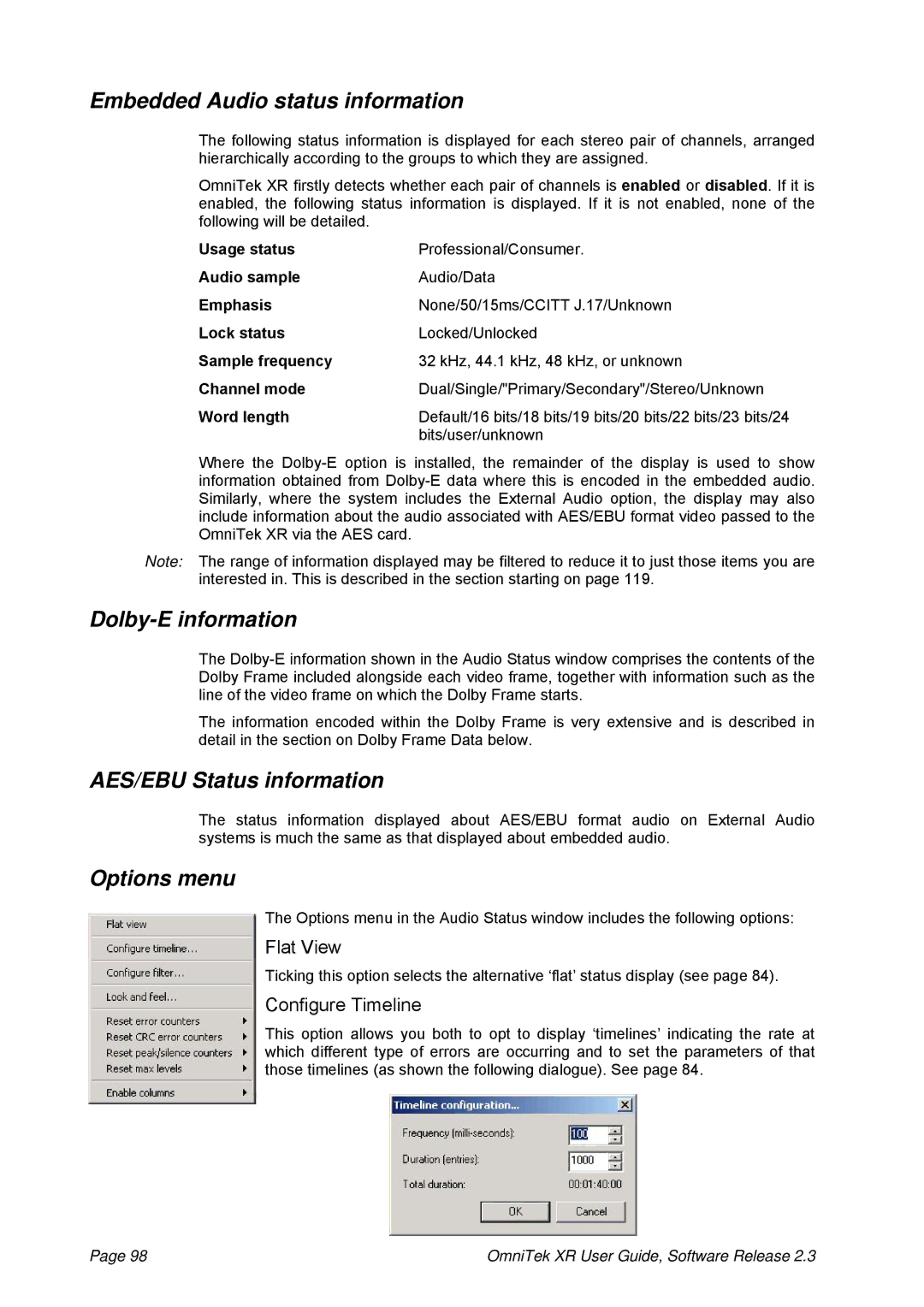
Embedded Audio status information
The following status information is displayed for each stereo pair of channels, arranged hierarchically according to the groups to which they are assigned.
OmniTek XR firstly detects whether each pair of channels is enabled or disabled. If it is enabled, the following status information is displayed. If it is not enabled, none of the following will be detailed.
Usage status | Professional/Consumer. |
Audio sample | Audio/Data |
Emphasis | None/50/15ms/CCITT J.17/Unknown |
Lock status | Locked/Unlocked |
Sample frequency | 32 kHz, 44.1 kHz, 48 kHz, or unknown |
Channel mode | Dual/Single/"Primary/Secondary"/Stereo/Unknown |
Word length | Default/16 bits/18 bits/19 bits/20 bits/22 bits/23 bits/24 |
| bits/user/unknown |
Where the
Note: The range of information displayed may be filtered to reduce it to just those items you are interested in. This is described in the section starting on page 119.
Dolby-E information
The
The information encoded within the Dolby Frame is very extensive and is described in detail in the section on Dolby Frame Data below.
AES/EBU Status information
The status information displayed about AES/EBU format audio on External Audio systems is much the same as that displayed about embedded audio.
Options menu
The Options menu in the Audio Status window includes the following options:
Flat View
Ticking this option selects the alternative ‘flat’ status display (see page 84).
Configure Timeline
This option allows you both to opt to display ‘timelines’ indicating the rate at which different type of errors are occurring and to set the parameters of that those timelines (as shown the following dialogue). See page 84.
Page 98 | OmniTek XR User Guide, Software Release 2.3 |
